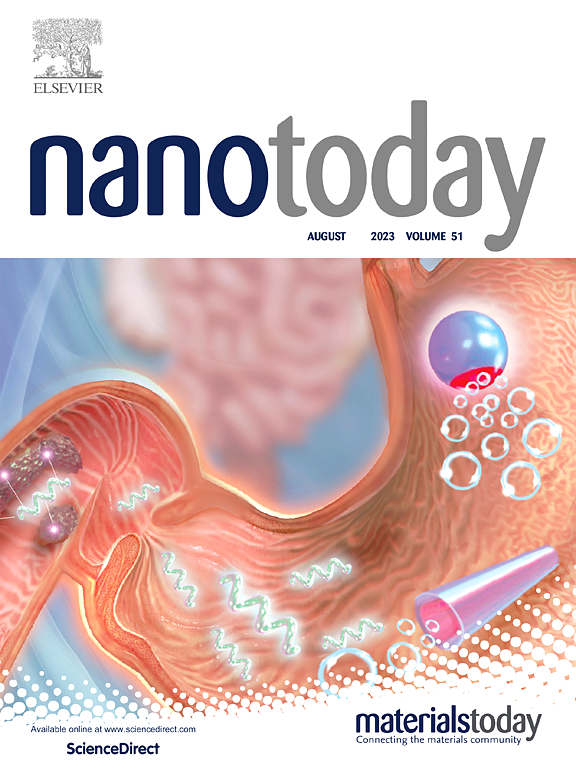模块化自组装肽中纤维单元的抗菌作用
IF 10.9
1区 材料科学
Q1 CHEMISTRY, MULTIDISCIPLINARY
引用次数: 0
摘要
在“识别-捕获”抗菌过程中使用模块化自组装肽(masp)形成纳米纤维(NFs)的策略受到了广泛关注。在这项研究中,我们开发了一系列masp,并研究了控制其抗菌效果的结构决定因素,重点研究了β-片含量和纳米纤维力学。masp与脂多糖(LPS)孵育后β-薄片含量(Δβ-sheet)的变化取决于纤维亚基的肽结构。Δβ-sheet与最低抑菌浓度(MIC)呈显著负相关,表明β-sheet含量的增加直接增强了抗菌活性。此外,用AFM定量表征了NFs的杨氏模量,并与MIC值呈反比关系。这表明,NFs的杨氏模量较高,具有较好的细菌抑制作用。同时,我们证明了低于MIC浓度的msps具有很强的抗感染潜力。结果发现,具有亲水性纤维单元的msap的NFs比疏水性msap的NFs更缠绕在细菌周围,显示出更高的细菌对宿主细胞的侵袭抑制作用。对MSAPs抗菌活性的了解有助于我们设计出更有效的抗菌肽。本文章由计算机程序翻译,如有差异,请以英文原文为准。
Antimicrobial effects of fibrous unit in modular self-assembling peptides
The strategy of using modular self-assembling peptides (MSAPs) forming nanofibers (NFs) in the "recognition-capture" antibacterial process has gained significant attention. In this study, we developed a series of MSAPs and investigated the structural determinants governing their antibacterial efficacy, with a focus on the β-sheet content and nanofiber mechanics. The variation in β-sheet content (Δβ-sheet) of MSAPs after incubation with lipopolysaccharides (LPS) was contingent on the peptide structure of the fibrous subunits. A pronounced negative correlation was observed between Δβ-sheet and the minimum inhibitory concentration (MIC), indicating that enhanced β-sheet content directly potentiated antimicrobial activity. Furthermore, the Young’s modulus of the NFs was quantitatively characterized by AFM, exhibited an inverse relationship with MIC values. This suggests that the higher Young’s modulus of NFs confer superior bacterial inhibition. Meanwhile, we demonstrated that MSAPs at concentrations lower than MIC possess strong anti-infection potential. It was found that the NFs of MSAPs with hydrophilic fibrous units entangled around the bacteria more than hydrophobic ones, showing higher invasion inhibition of bacteria to host cells. This understanding of the antimicrobial activity of MSAPs may help us design more effective antibacterial peptides.
求助全文
通过发布文献求助,成功后即可免费获取论文全文。
去求助
来源期刊

Nano Today
工程技术-材料科学:综合
CiteScore
21.50
自引率
3.40%
发文量
305
审稿时长
40 days
期刊介绍:
Nano Today is a journal dedicated to publishing influential and innovative work in the field of nanoscience and technology. It covers a wide range of subject areas including biomaterials, materials chemistry, materials science, chemistry, bioengineering, biochemistry, genetics and molecular biology, engineering, and nanotechnology. The journal considers articles that inform readers about the latest research, breakthroughs, and topical issues in these fields. It provides comprehensive coverage through a mixture of peer-reviewed articles, research news, and information on key developments. Nano Today is abstracted and indexed in Science Citation Index, Ei Compendex, Embase, Scopus, and INSPEC.
 求助内容:
求助内容: 应助结果提醒方式:
应助结果提醒方式:


